University of Georgia Athletics
Stegeman Coliseum - Basketball

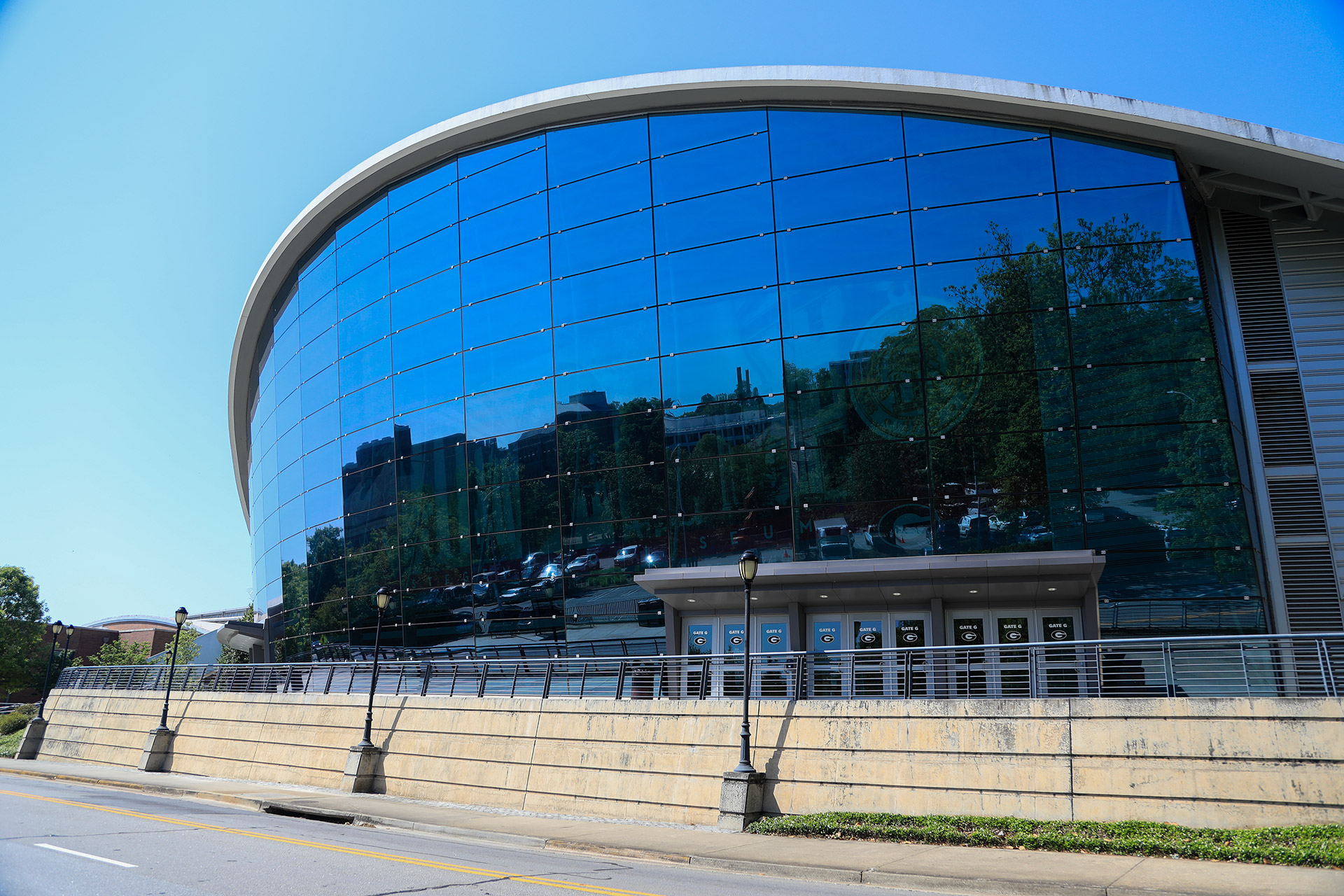
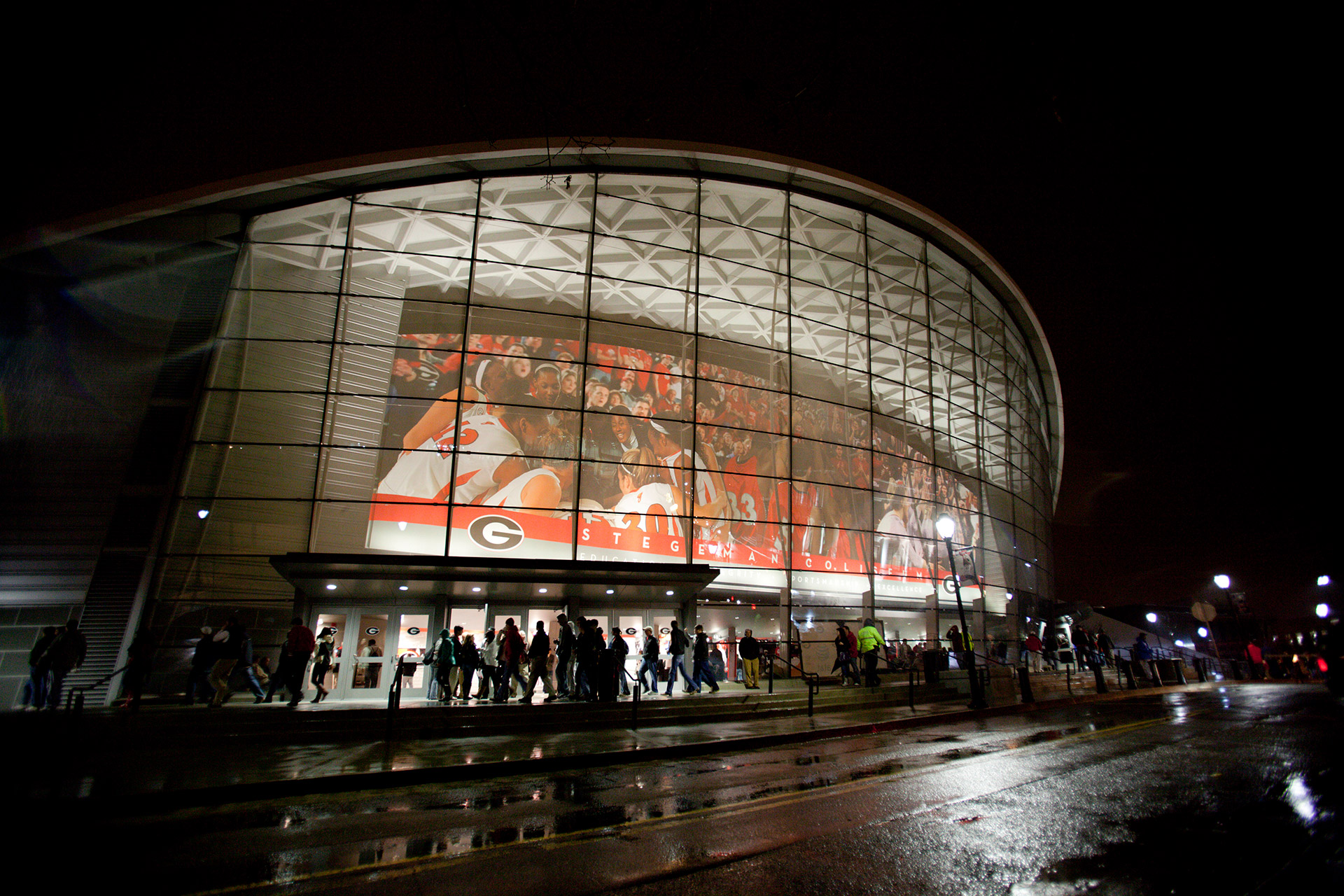
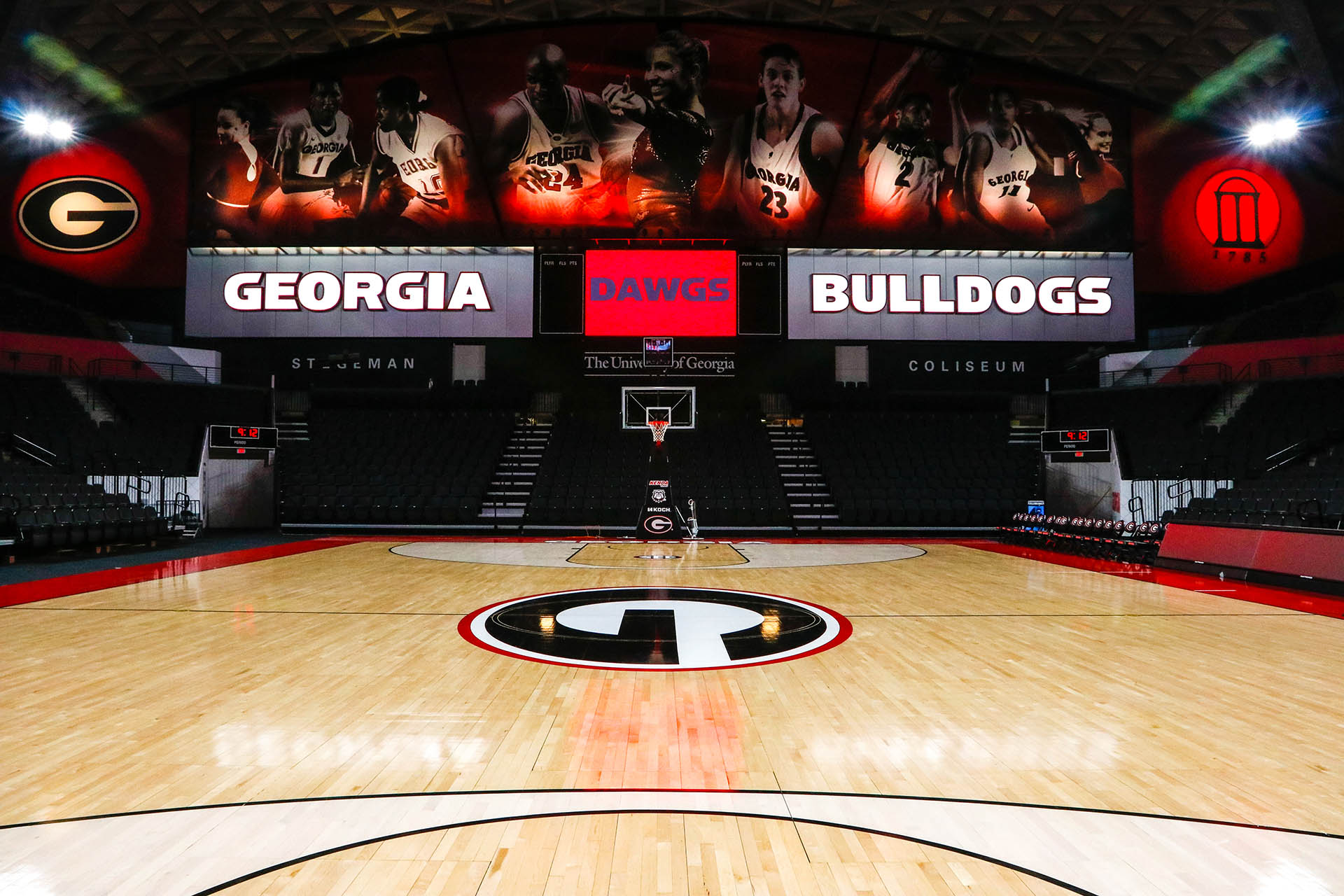
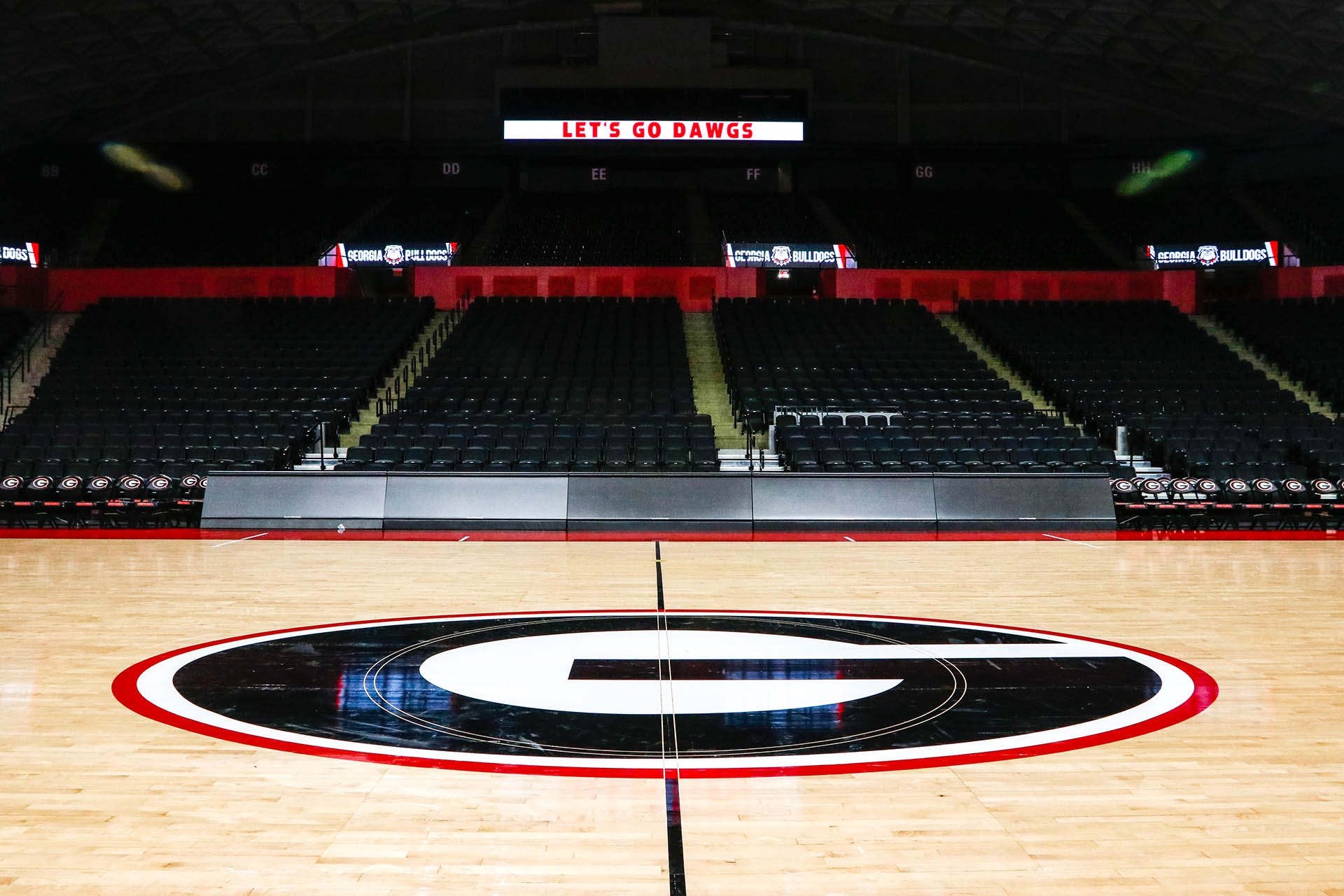
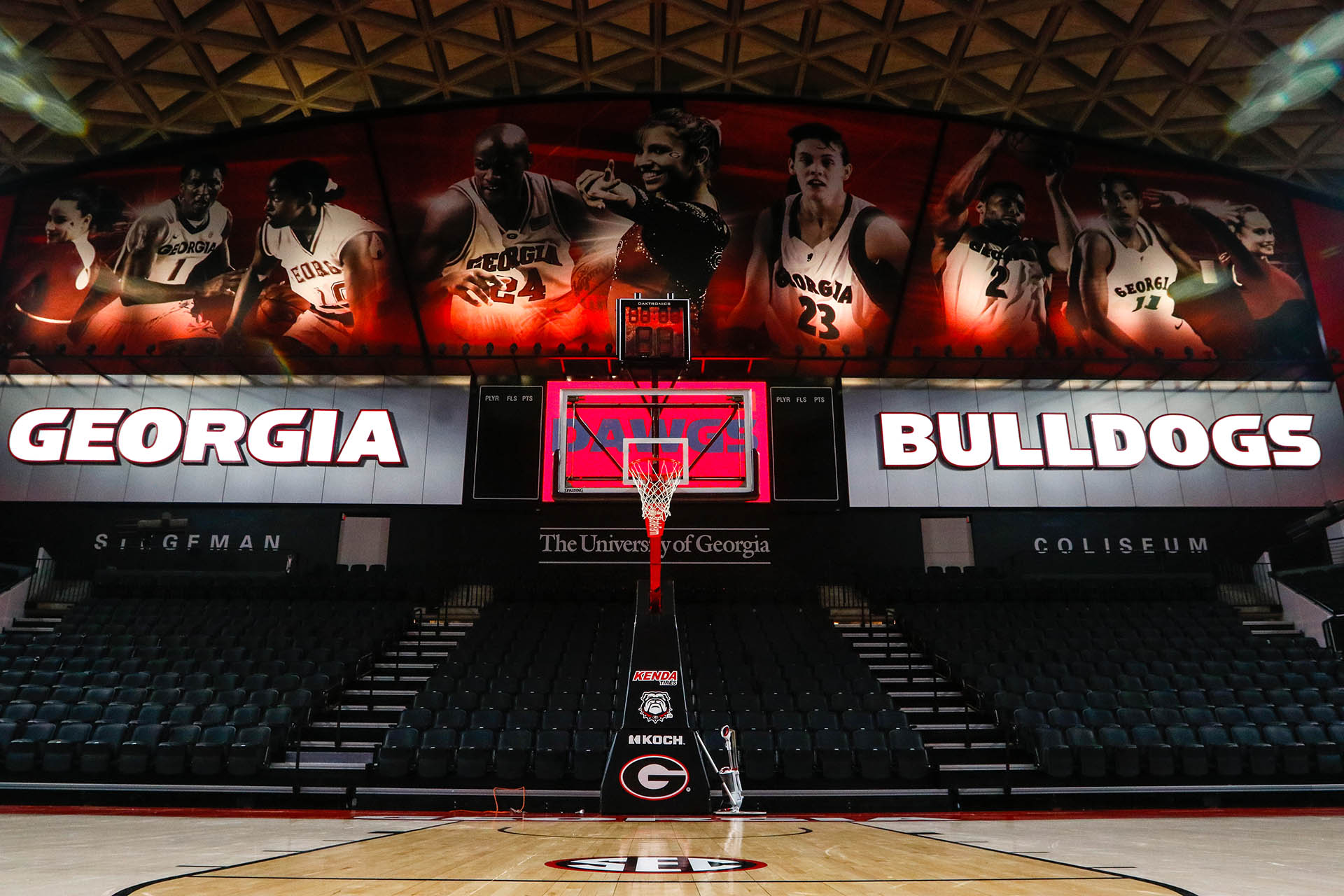
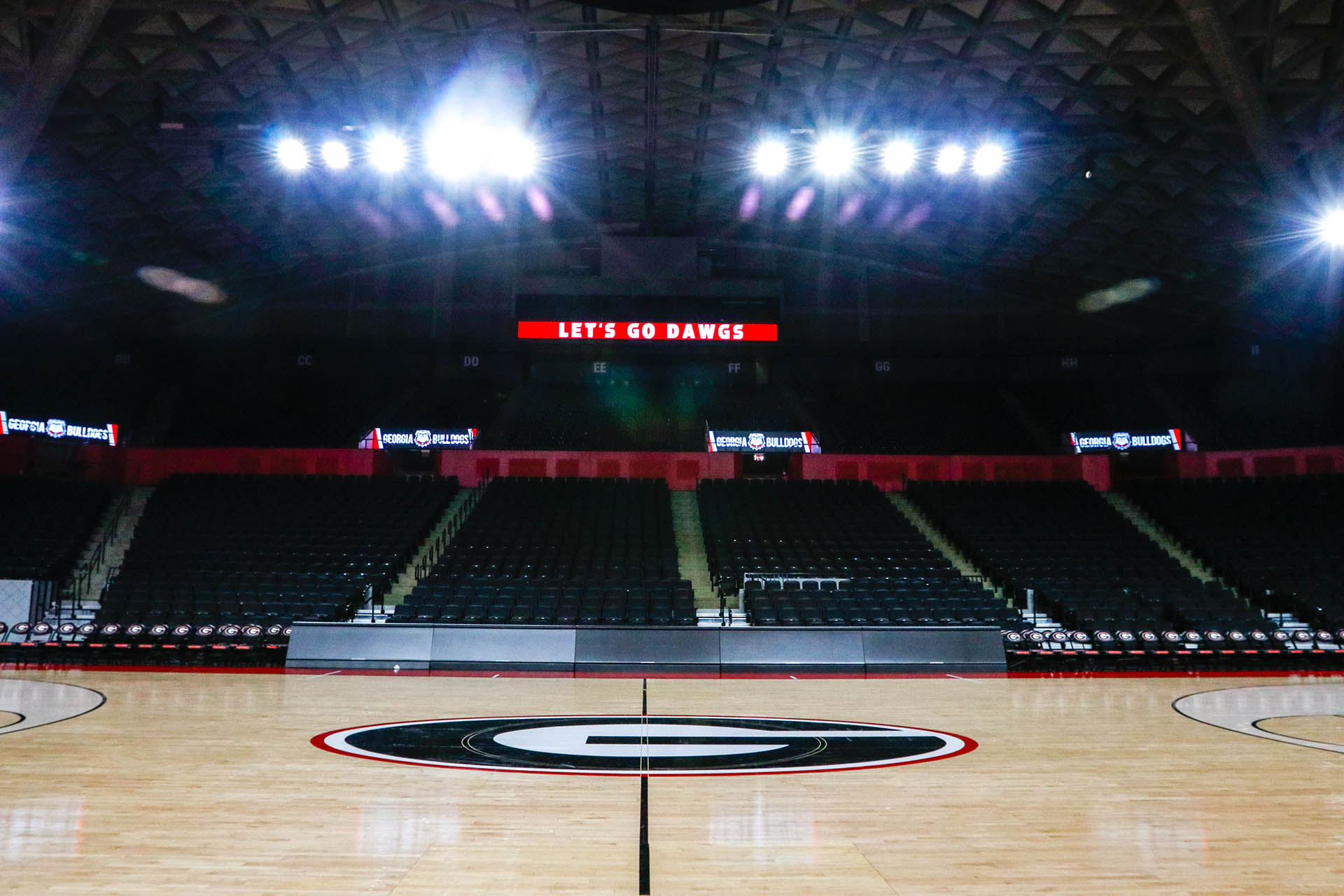
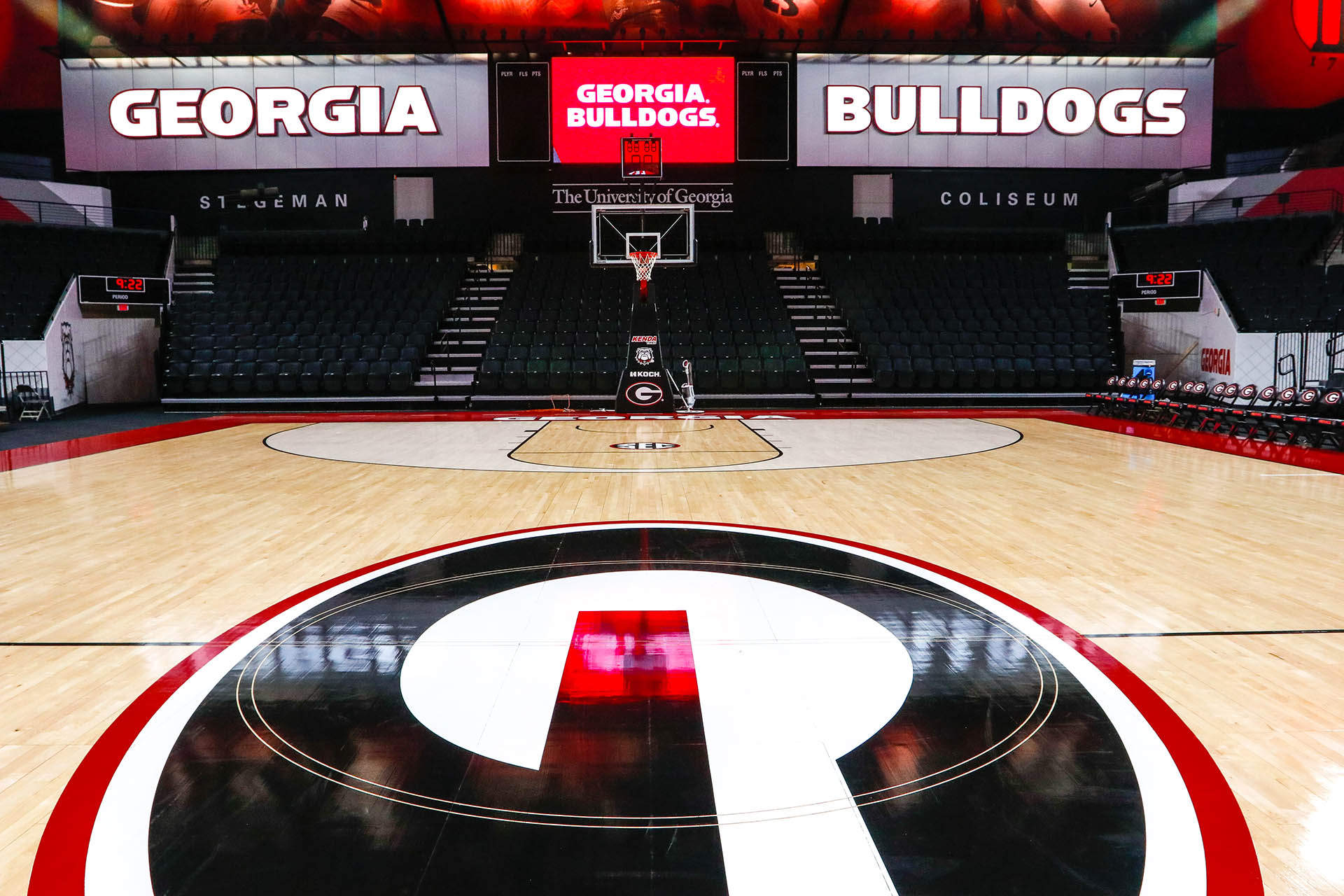
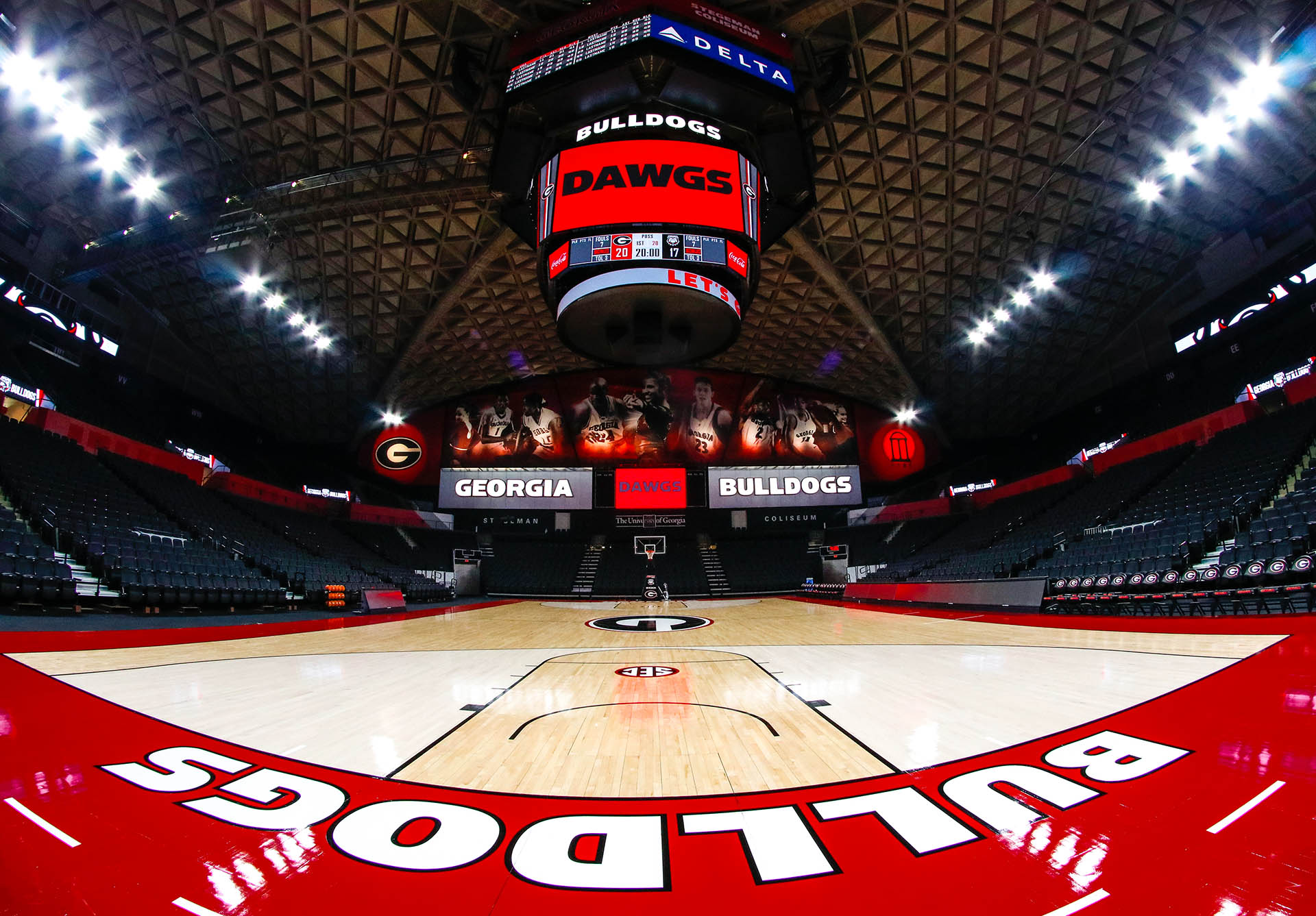
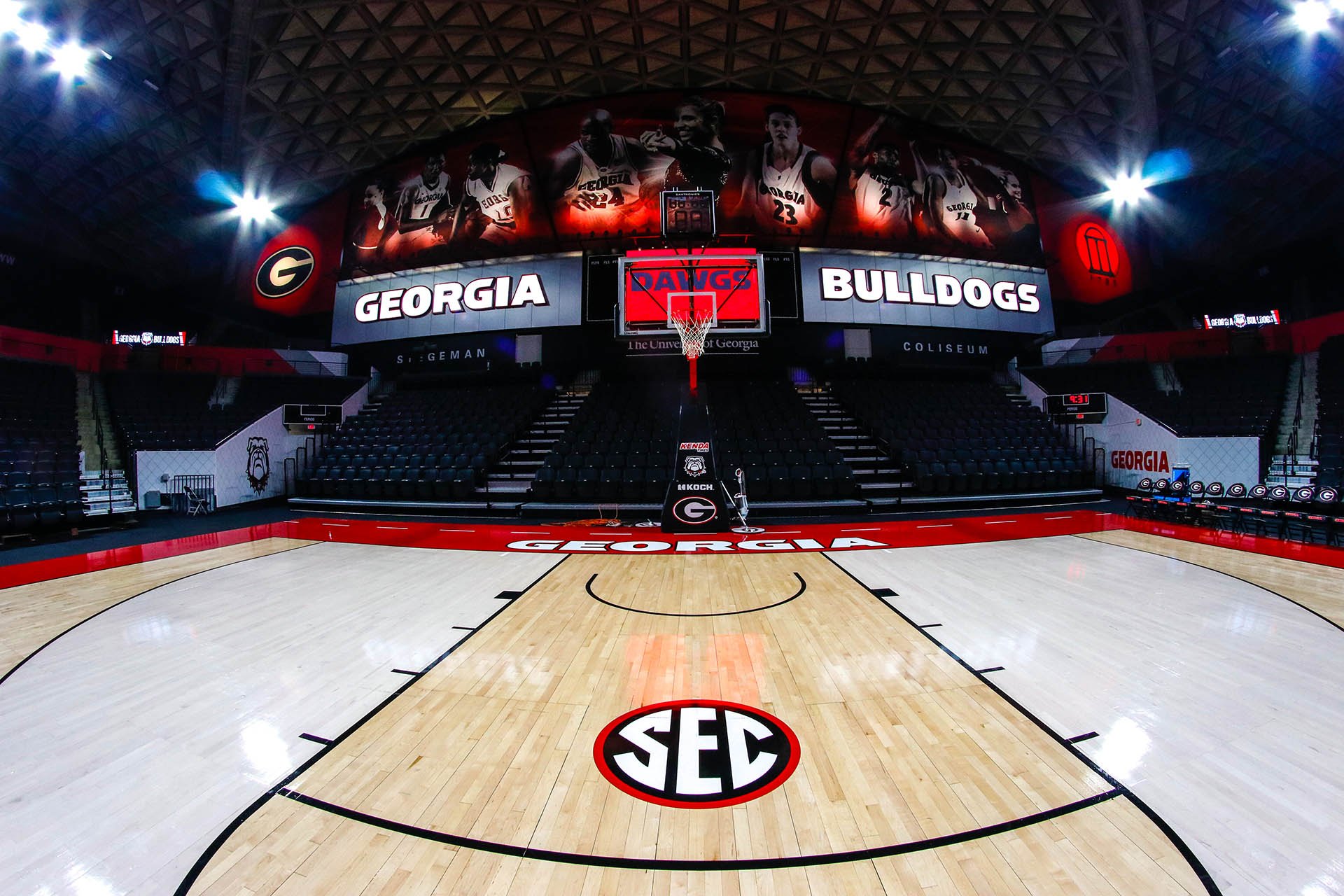
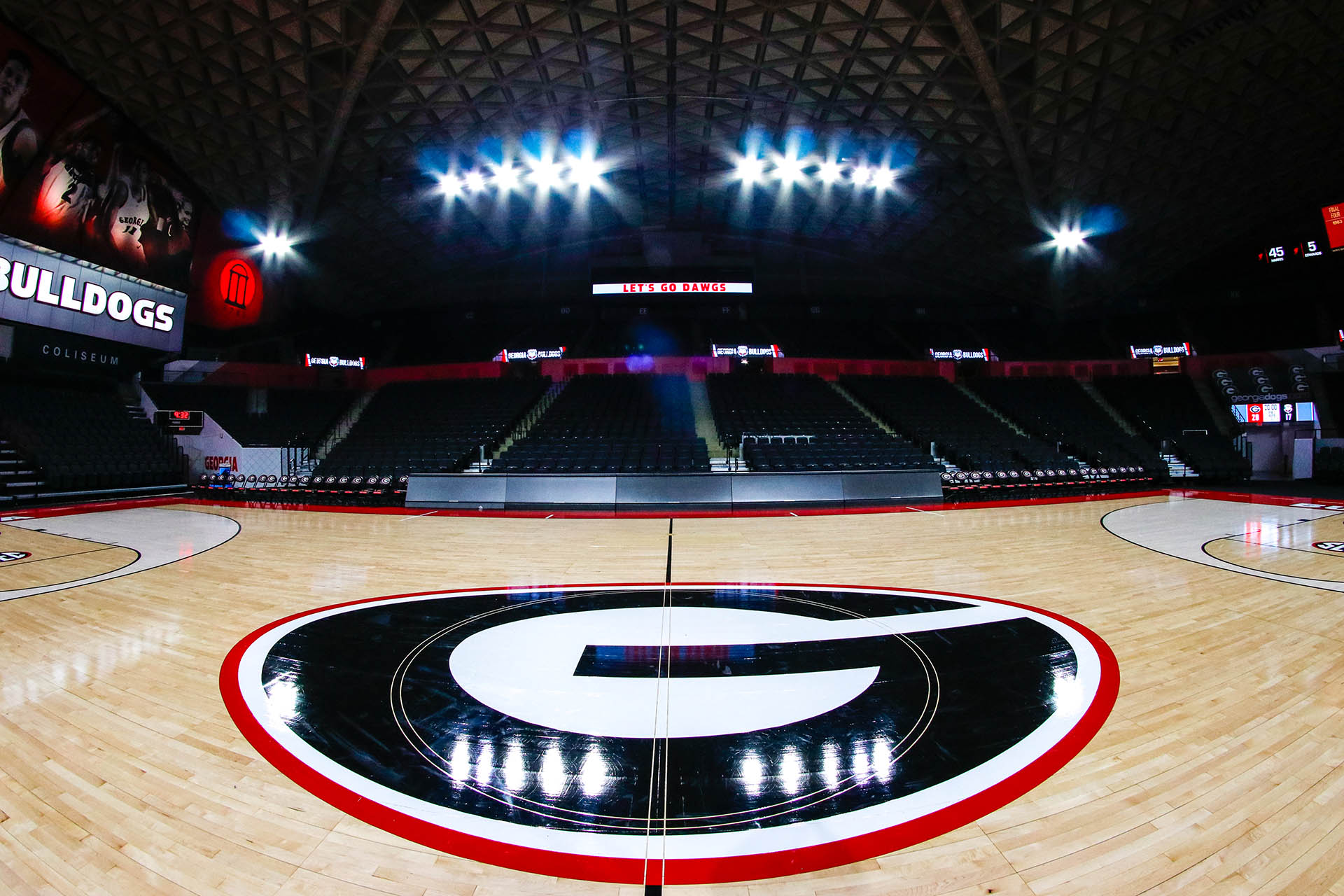
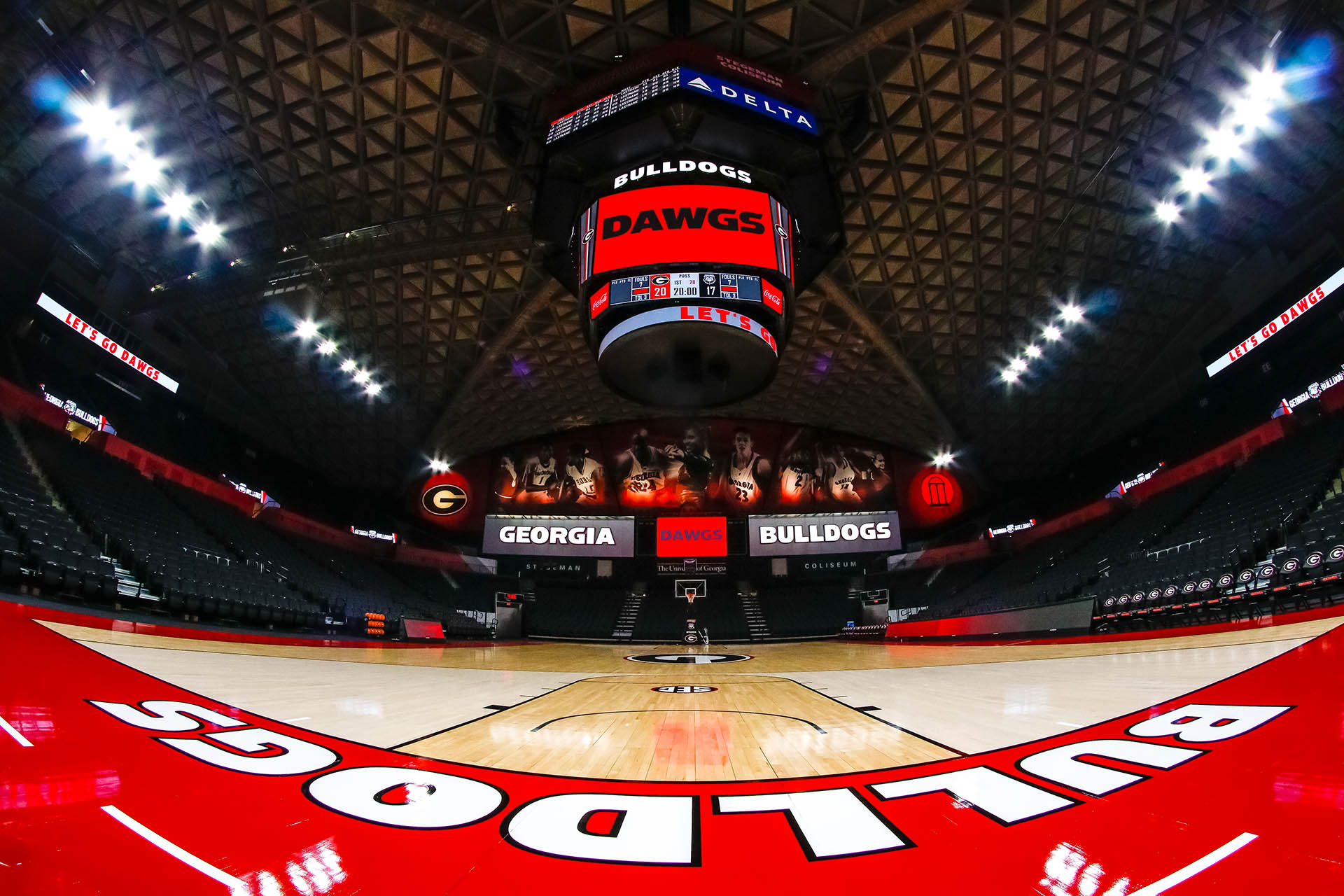
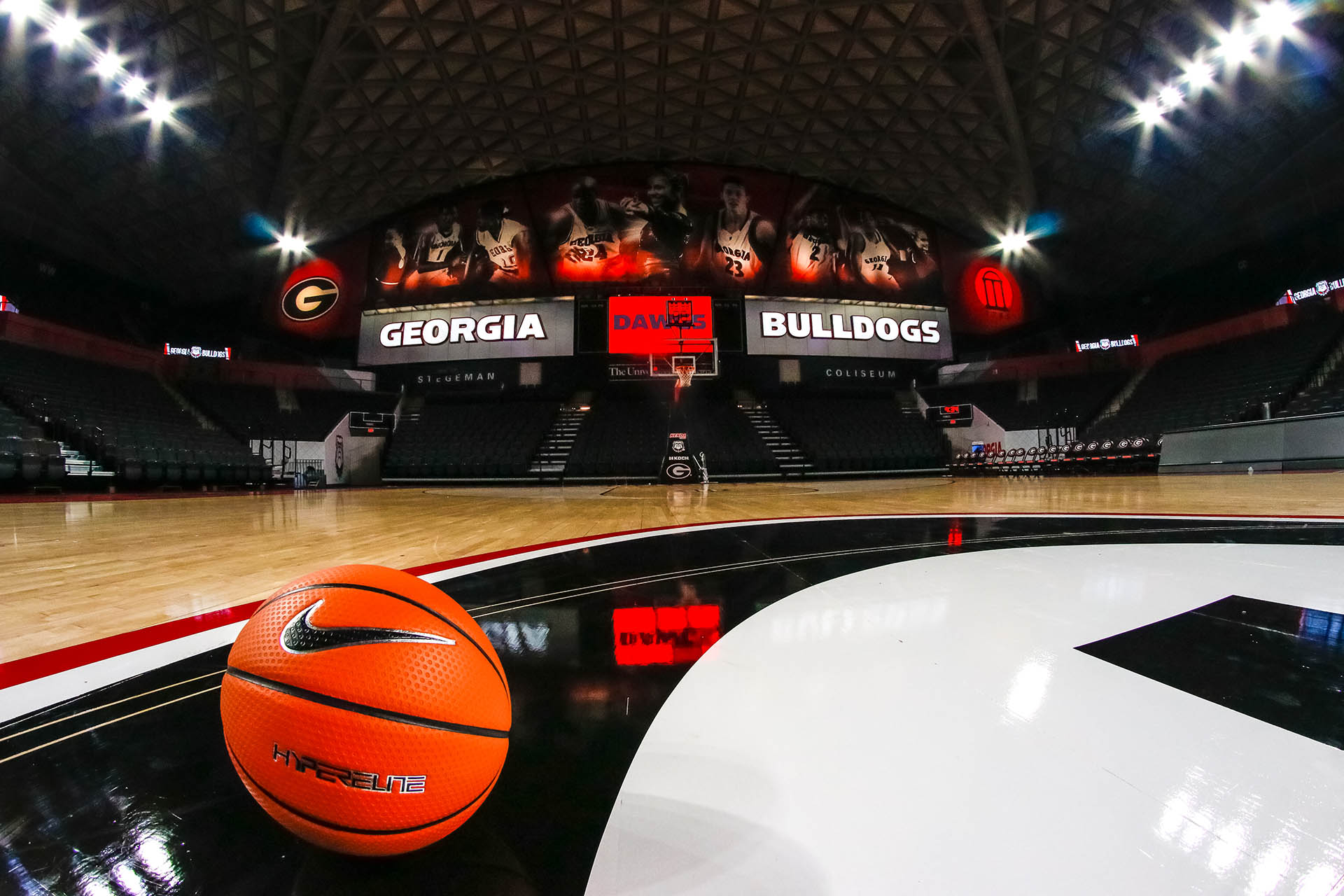
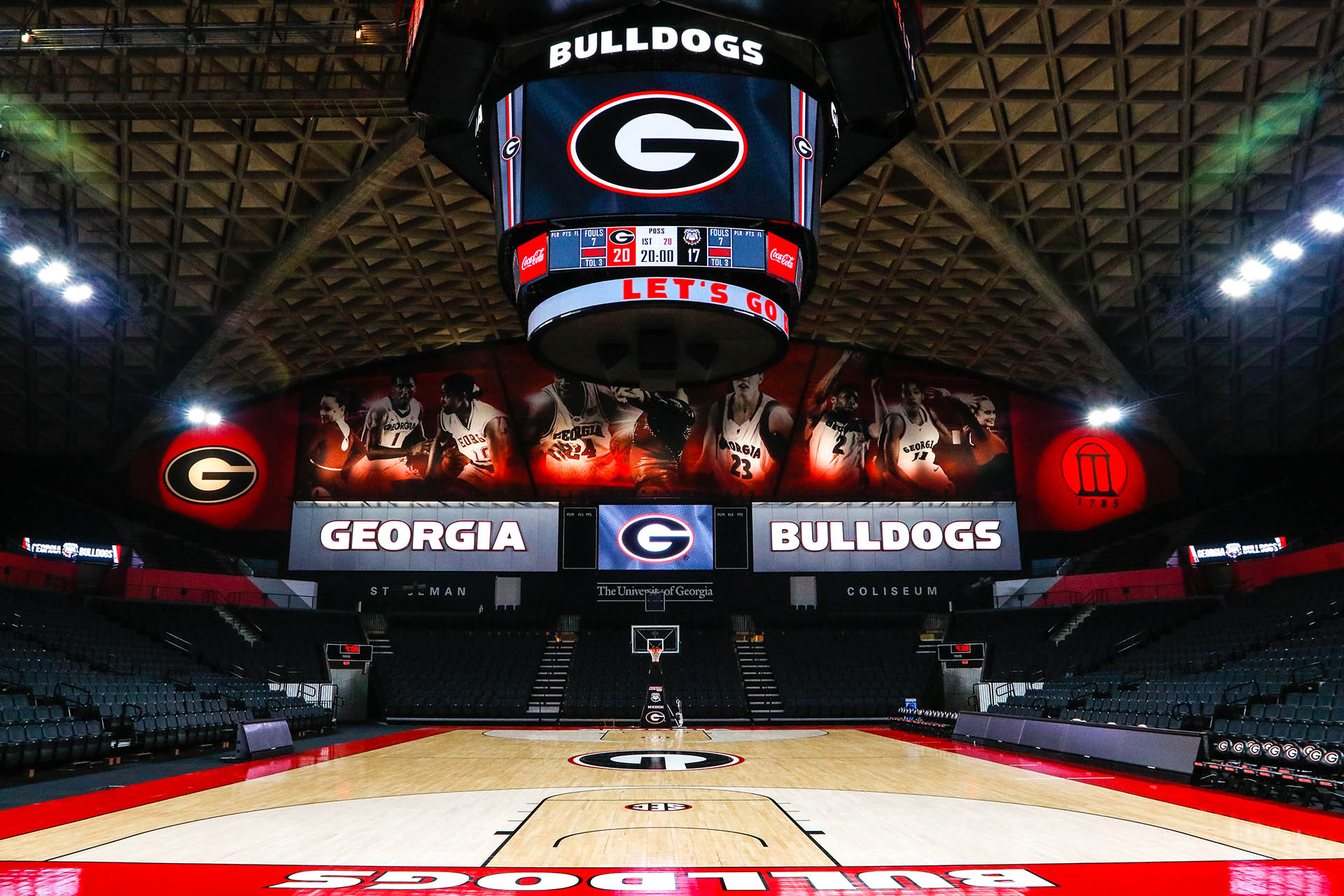
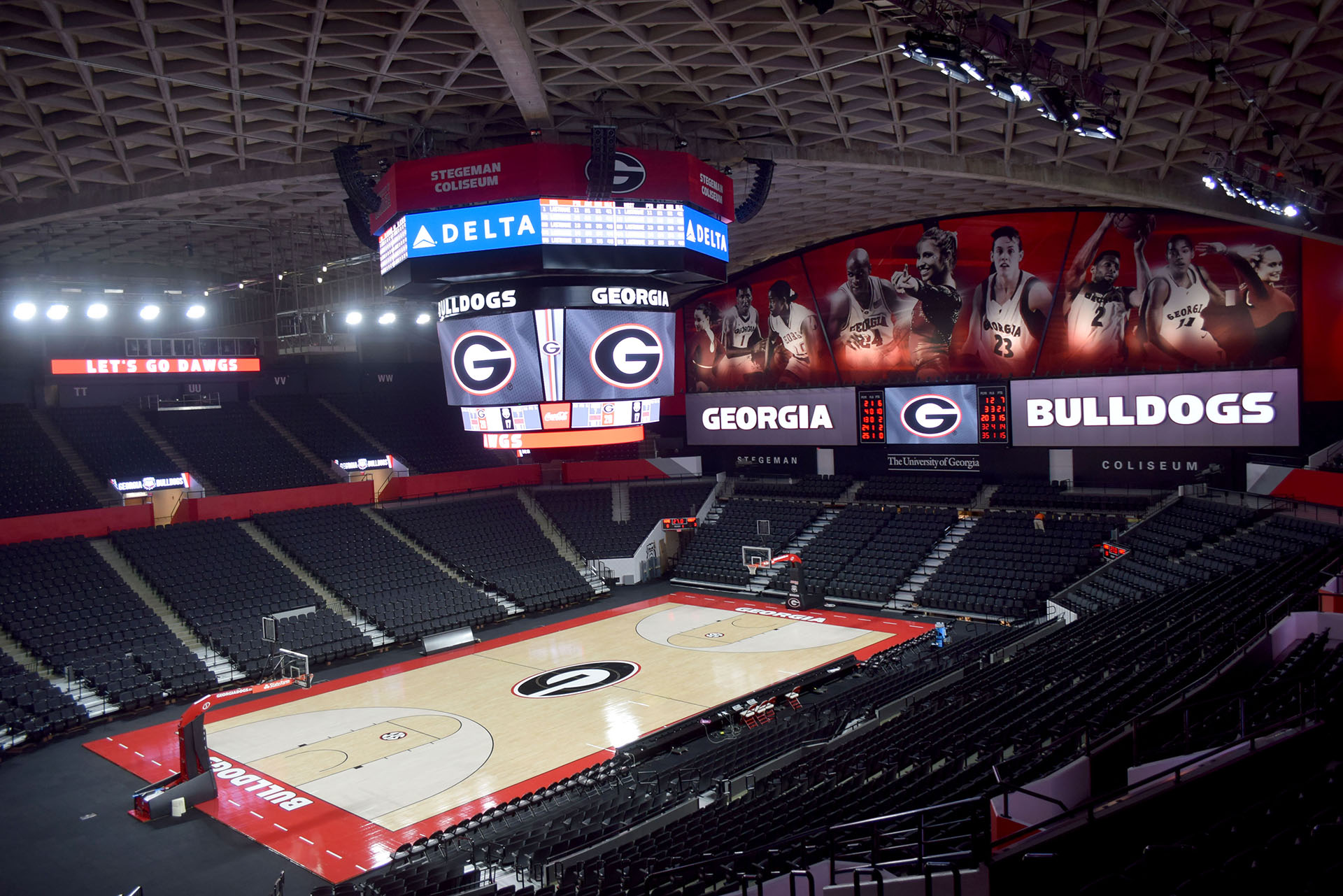

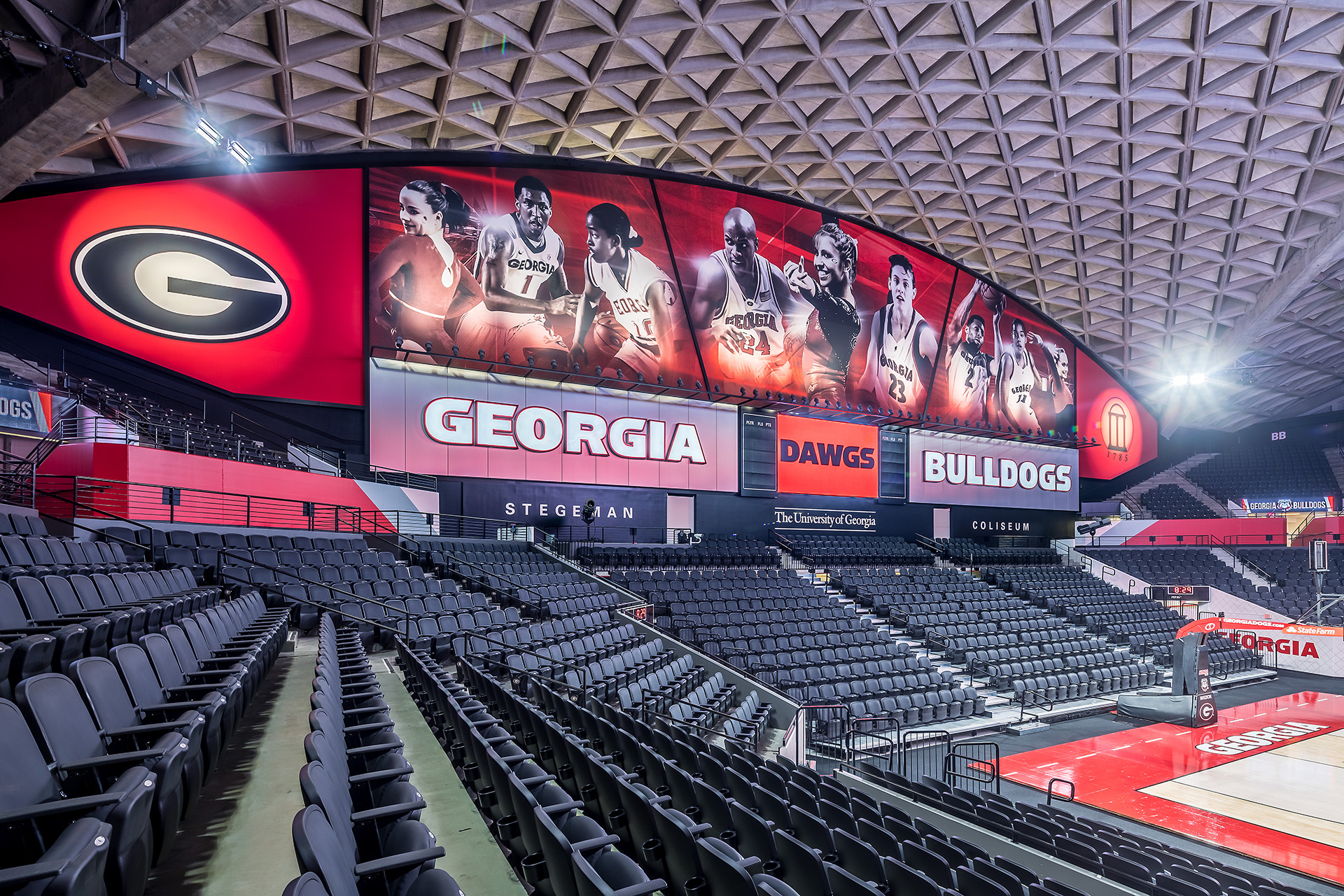

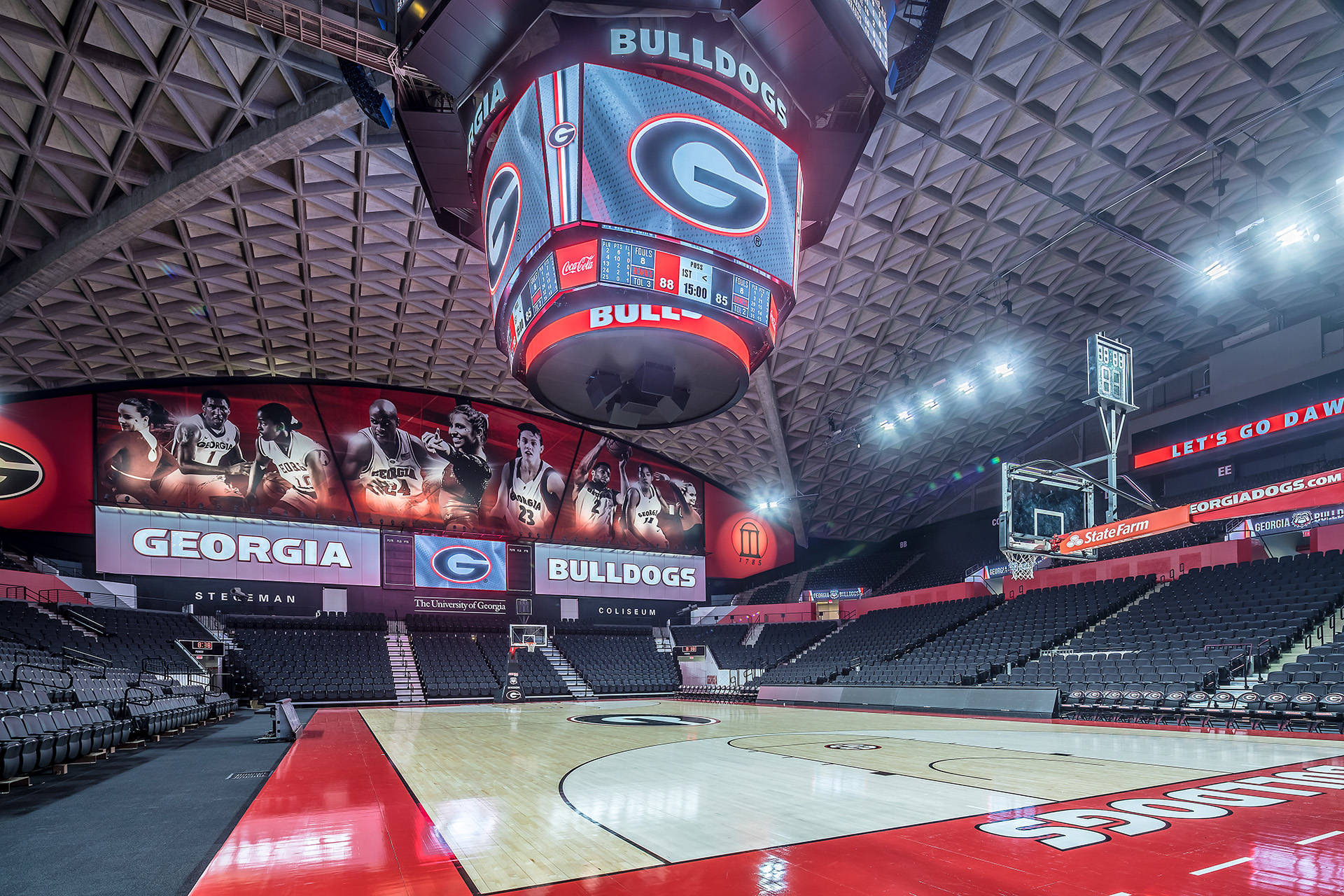
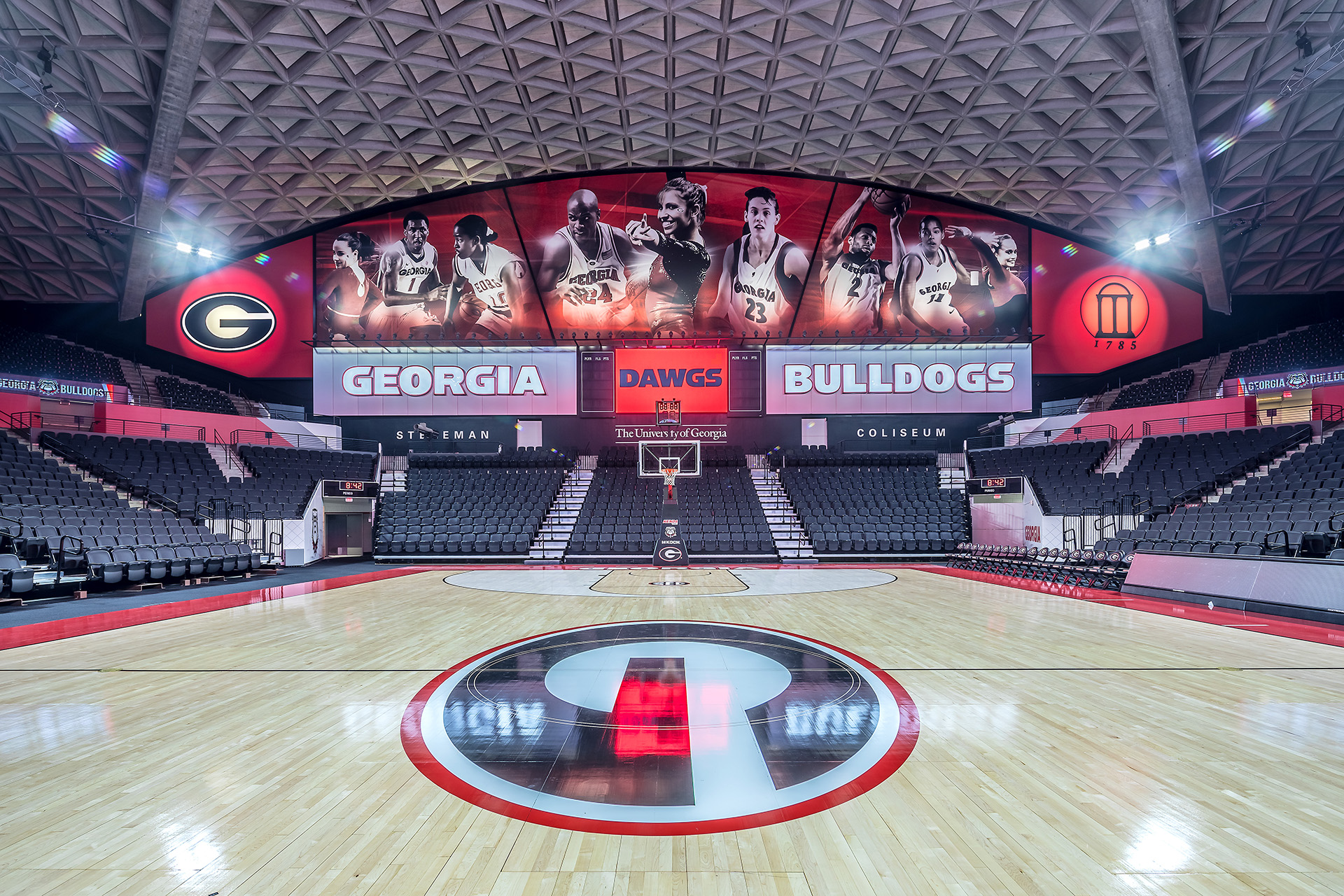
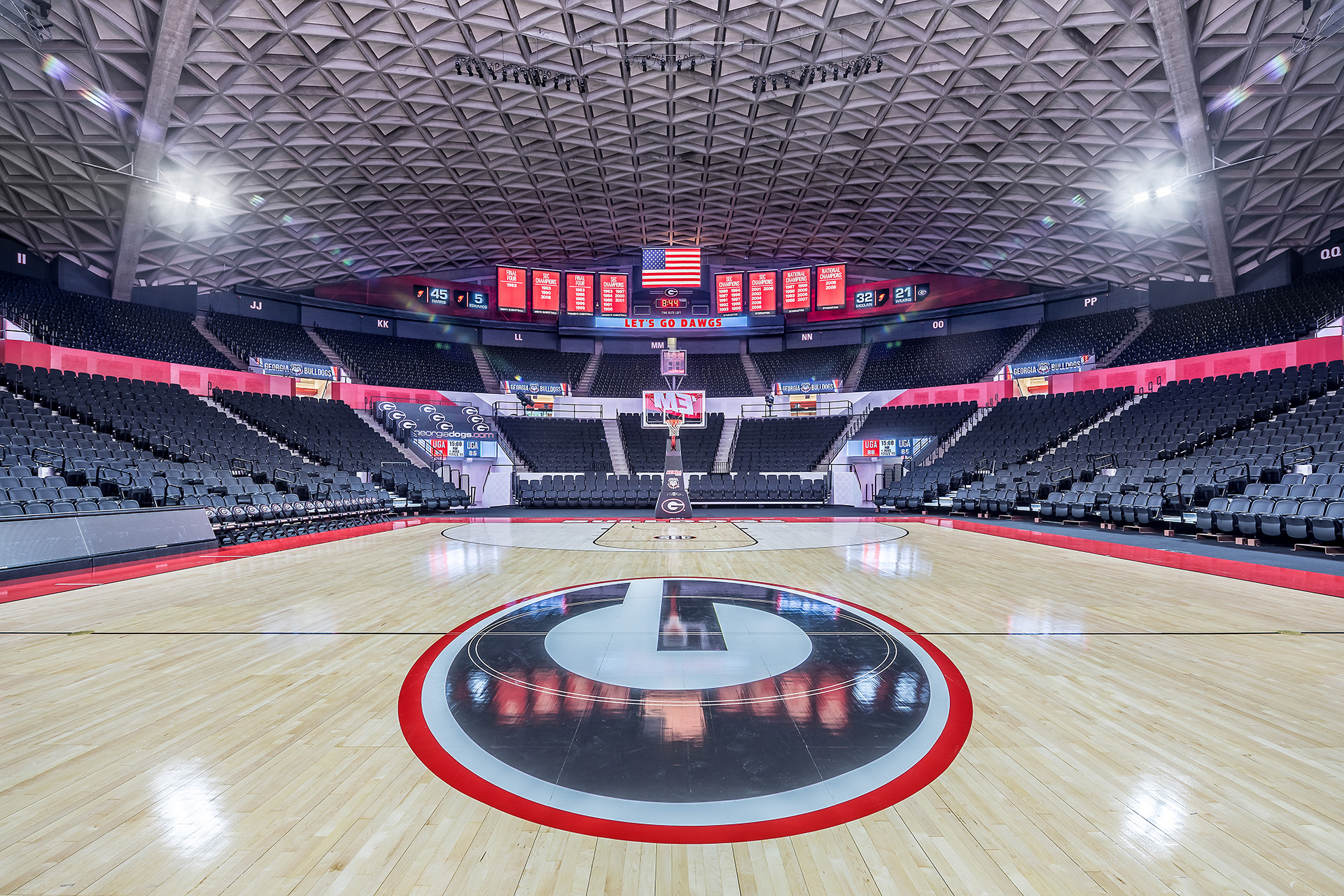
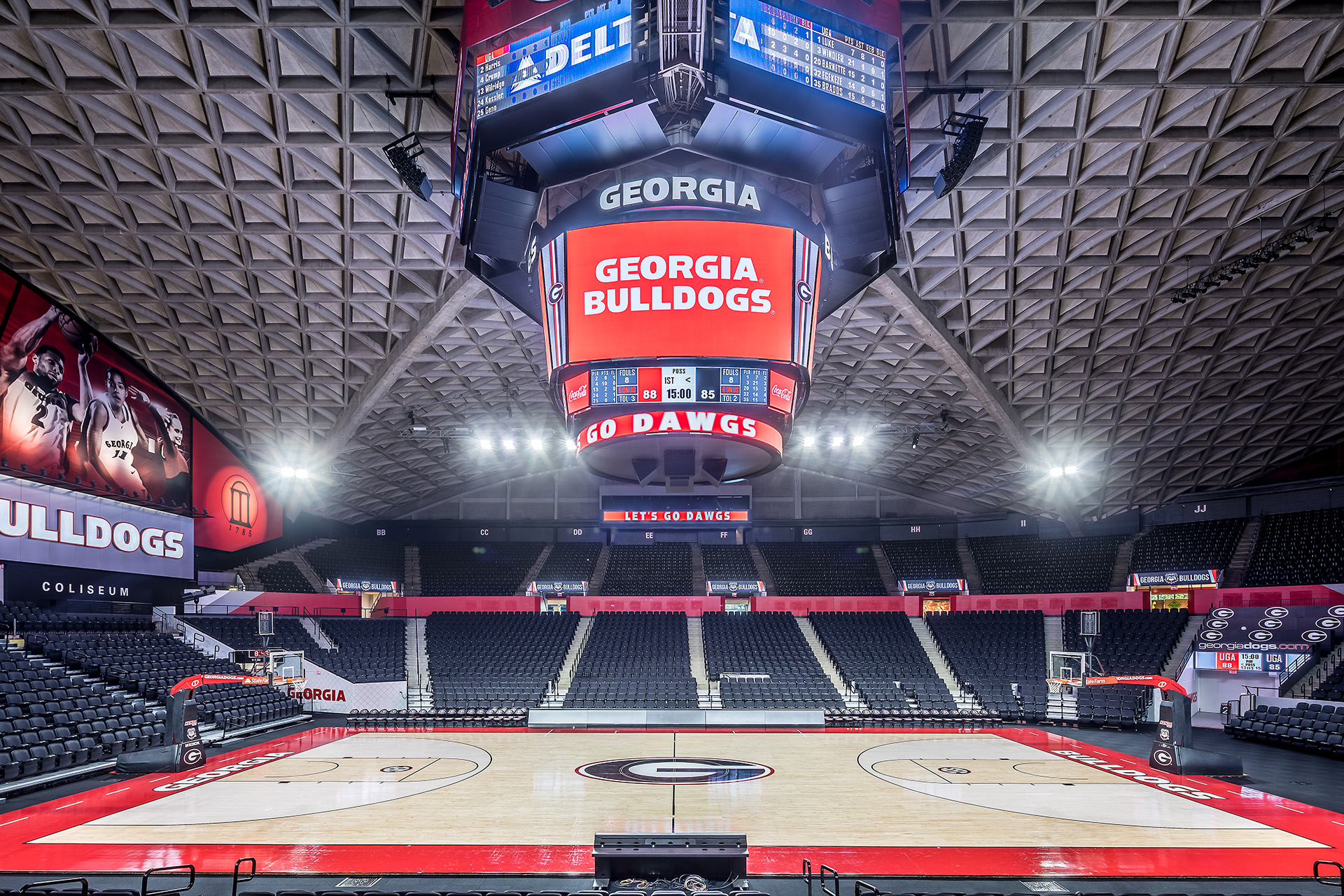

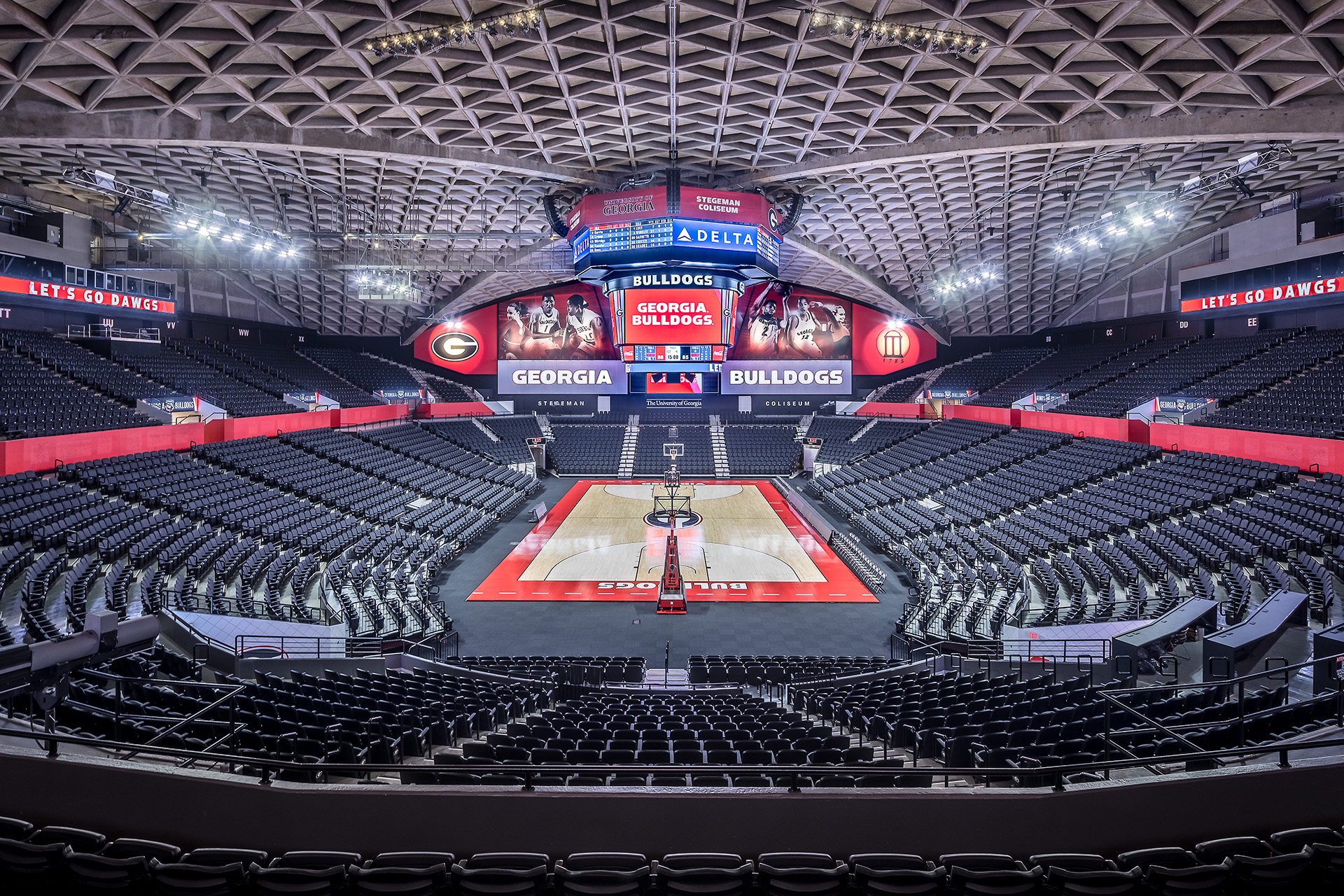
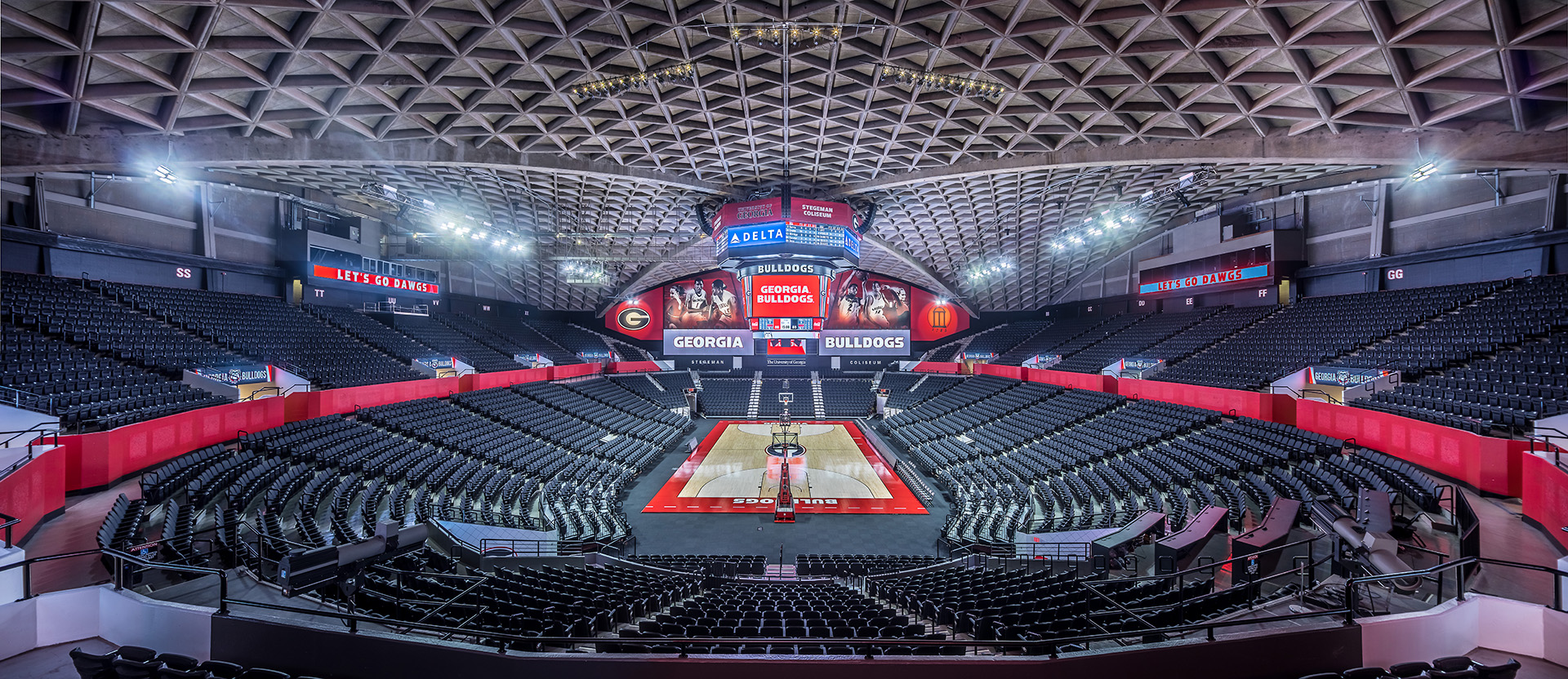

Home of The Bulldogs
Christened in 1963 as the Georgia Coliseum, the venue was officially renamed and dedicated to the memory of Herman James Stegeman on Saturday, March 2, 1996. Stegeman made many contributions to Georgia’s athletic program during his 20-year tenure (1919-39). He was a pioneer in the development of college basketball in the south, originating the region’s first big basketball tournament when he organized the Southern Conference Tournament in Atlanta from 1921-32. Stegeman Hall on the UGA campus was named for Coach Stegeman in 1946 and for years it was home of the University’s athletic and physical education departments. The athletic department moved its offices to the new coliseum in 1964, and Stegeman Hall was demolished in 1995 following completion of the Ramsey Student Center for Physical Activities.The Coliseum is actually two separate structures, the roof and the building beneath it. The only connection is an aluminum bellows which seals the joints and permits the rise and fall of the roof with temperature change.
In addition, Stegeman Coliseum was utilized for rhythmic gymnastics and preliminary volleyball competition during the Centennial Olympic Games in 1996.
Stegeman has recently undergone thorough a series of major renovations, receiving a 21st Century face lift. In 2017, fans walked in to the final product following more than $20-million in renovations over several years.
In 2010, Stegeman’s concourses received a similar makeover, upgrading the graphics, enhancing spectator access to concessions and restrooms and adding 5,000-square feet of concourse space on each side of the arena. Those efforts won awards from both the American Institute of Architects and the Illuminating Engineering Society of North America.
During the summer of 2017, the arena received a massive center-hung scoreboard, new black seats, an improved LED lighting system, a state-of-the-art sound system and graphics above the horseshoe end celebrating past teams and retired jerseys. That followed work in 2017 which provided a dramatic mural covering the Coliseum’s distinctive end wall.
Men's Basketball
FANS FLOCK TO THE STEG:Georgia Basketball broke its all-time total attendance record for Stegeman Coliseum during both the 2018-19 and 2019-20 seasons. In 2019-20, the Bulldogs’ home average of 9,651 was the second-highest in school history as Georgia drew a schol-record 11 crowds of 10,000-plus fans at Stegeman.
| MEN'S STEGEMAN COLISEUM RECORDS | |
|---|---|
| INDIVIDUAL POINTS | |
| Georgia: | 46 by Ronnie Hogue vs. LSU (12/20/71) |
| Opponent: | 58 by Pete Maravich, LSU (3/8/69) |
| INDIVIDUAL REBOUNDS | |
| Georgia: | 32 by Bob Lienhard vs. Sewanee (12/3/68) |
| Opponent: | 27 by Clyde Lee, Vanderbilt (1/11/65) |
| TEAM POINTS | |
| Georgia: | 138 vs. Arkansas A&M (12/2/67) |
| Opponent: | 106 by Kentucky (2/19/68) |
| TEAM REBOUNDS | |
| Georgia: | 78 vs. Sewanee (12/3/68) |
| Opponent: | 62 by Kentucky (2/9/76) |
Women's Basketball
Stegeman Coliseum has provided the Lady Bulldogs with a superior home court advantage for decades. Georgia has compiled a 515-122 record in 47 seasons of competition at Stegeman, a winning percentage of 81 percent. From Dec. 2, 1984 through Dec. 4, 1987, Georgia recorded 40-consecutive home victories. At the time, that streak ranked eighth all-time in NCAA history. It still stands as the 25th-longest home winning streak in the history of Division I women’s hoops.| WOMEN'S STEGEMAN COLISEUM RECORDS | |
|---|---|
| INDIVIDUAL POINTS | |
| Georgia: | 43 Katrina McClain vs. Charlotte (2/10/87) |
| Opponent: | 35 Jennifer Gillom, Ole Miss (3/1/86) |
| 35 Valerie Still, Kentucky (2/6/82) | |
| INDIVIDUAL REBOUNDS | |
| Georgia: | 24 Katrina McClain vs. Western Kentucky (2/10/86) |
| Opponent: | 23 Cheryl Taylor, Tennessee (3/16/85) |
| TEAM POINTS | |
| Georgia: | 124 vs. Mercer (2/11/81) |
| Opponent: | 97 by Connecticut (1/20/97) |
| TEAM REBOUNDS | |
| Georgia: | 68 vs. UNC-Asheville (1/23/80) |
| Opponent: | 63 by Tennessee (1/8/96) |
| STEGEMAN’S LARGEST CROWDS - WOMEN'S | ||
|---|---|---|
| Opponent | Date | Attendance |
| Tennessee | 1/29/12 | 10,523 |
| Tennessee | 1/14/07 | 10,523 |
| Tennessee | 1/17/00 | 10,523 |
| Tennessee | 1/28/99 | 10,523 |
| UCONN | 1/20/97 | 10,523 |
| Tennessee | 2/10/02 | 10,082 |
| Tennessee | 2/12/04 | 9,495 |
| Auburn | 2/23/91 | 9,011 |
| Texas | 11/21/04 | 8,218 |
| LSU | 1/25/04 | 8,127 |
Before Stegeman Coliseum
Since the inaugural season of 1905-06, Georgia basketball has called six different buildings home. These facilities have held a wide range of usefulness and pertinence to basketball. There’s little doubt, however, that the Bulldogs’ current home of Stegeman Coliseum is the best, most accommodating home they’ve ever had.During the 1906-12 seasons, Georgia games were played in the old Athens YMCA building located at the corner of Lumpkin and Clayton Streets, currently the site of the Georgia Theater.
The seating capacity for spectators was about 200, but it didn’t seem to matter in those days. The earliest Bulldogs played their games in relative anonymity. Very rarely did the attendance reach full capacity at the YMCA building. The building that is now called Memorial Hall on campus was the second gymnasium used by the Bulldog cagers. Construction on this facility began in 1910 and was to be built by the Alumni and the YMCA in a joint effort. The Alumni Association, however, eventually assumed full responsibility for the funds for its construction. Only in a partial state of completion, the team began to use the auditorium of “Alumni Hall,” as it was called then, for its home games. Spectators viewed the games from a balcony which ran around the playing court, and the baskets were affixed to this balcony. In fact, the balcony became quite the advantage for Bulldog hoopsters, who had to tailor the arc of their shots to avoid hitting it.
Alumni Hall was used until about 1920, when the team moved to another on-campus location known as “The Octagon.” It was located about where the current Main Library parking lot is, between the library and Jackson Street. Built in 1916 for $3,600 and for the purpose of accommodating summer-school functions, the Octagon was made of wood and sat approximately 1,400 people. The main problem for basketball was the lack of a heating system in this 8-sided building. There was also a four-foot opening around the wall up to the roof, with the roof overhanging to prevent rain from blowing in. The Octagon was used sparingly because of the absence of heat and also because of the ever-growing crowds.
Moss Auditorium, formerly the third floor of what became the Gallant-Belk store, was used for most of the games from 1920 until Woodruff Hall was completed. Crowds of up to 1,500 were estimated to have attended some of the home games.
Around this time, however, Coach Herman J. Stegeman was building quite a program. It became necessary for the basketball team to enjoy its own facility to accommodate the large crowds. Just before the completion of Woodruff Hall in 1925, the Bulldogs moved back into Alumni Hall, the construction of which had finally resumed after a fund-raising drive.
Excavation began on November 20, 1924 for the construction of Woodruff Hall, the building that was named for George and Harry Woodruff of Columbus, Ga. This facility was built in a central on-campus location, where the Journalism/ Psychology building now stands, and had a seating capacity of 3,500. There was space enough for three basketball courts, with the main court measuring not quite the required length of 94 feet. Built at an estimated cost of $53,000, Woodruff Hall was officially dedicated by Dr. S.V. Sanford on Feb. 21, 1925 in a game where Georgia defeated Georgia Tech 34-24.
Woodruff Hall served as the Bulldogs’ home for nearly 40 years. By the end of that stretch, however, many believed it had become the bane of the program.
Harbin “Red” Lawson was Georgia’s coach for the last 13 years in Woodruff Hall. Publicly, he joked that it was the only basketball facility where wind direction and velocity affected his strategy.
Other coaches, led by Kentucky’s Adolph Rupp, despised playing games there. So dimly lit was Woodruff Hall that Auburn coach Joel Eaves turned out half the lights in his own gym, just to prepare for the Georgia game.
Eventually, Eaves became Athletic Director at Georgia. Two years into his tenure, in 1964, the Bulldogs dedicated their current home as the Georgia Coliseum. In 1996, it was given its current name of Stegeman Coliseum in honor of the man that first lifted the Georgia basketball program into prominence.

